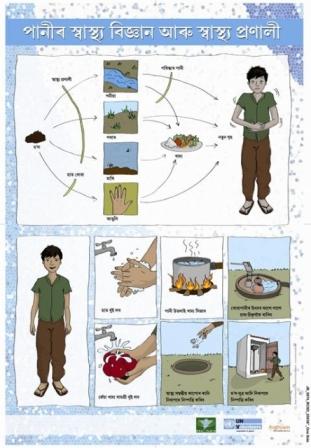/regions/political
Political
Development of mathematical models for clean up of Cr (VI) contaminated aquifers using bioremediation – A report by Indian Institute of Technology Madras
Posted on 23 Jan, 2011 09:20 PM. In-situ bioremediation is an attractive alternative for this purpose. To achieve this objective, bacterial strains were isolated and enriched from the contaminated site of Tamil Nadu Chromates and Chemicals Limited (TCCL) premises, Ranipet, Tamil Nadu, India.
Institutional framework for regulating use of groundwater in India – A report by IRMED for MoWR
Posted on 23 Jan, 2011 08:37 PM
The basic objectives of this study were -
Performance audit of Accelerated Irrigation Benefit Programme (AIBP) by CAG (2010)
Posted on 23 Jan, 2011 07:29 PMThe audit was conducted as a follow up audit of the earlier report on AIBP (No 15 of 2004) to assess whether the performance of AIBP had improved, and also whether the key issues highlighted in the earlier report had been appropriately addressed.
Training program on open source GIS at Dr. Babasaheb Ambedkar Marathwada University, Aurangabad
Posted on 23 Jan, 2011 11:07 AMDr. K. V. Kale
Professor & Head
Department of Computer Science and IT
Dr. Babasaheb Ambedkar Marathwada University, Aurangabad
Email: kvkale91@gmail.com
Telephone: 0240 2403315(O), 2403317 (F)
Dynamics of soil fertility management practices in semi-arid regions - A case study of Andhra Pradesh - EPW
Posted on 23 Jan, 2011 10:41 AMIt also attempted to examine how policy interventions threatened this knowledge base and the sustainable practices it supported.
Posters on water hygiene and sanitation in Assam
Posted on 22 Jan, 2011 08:35 PM
Supported by: ARGHYAM
Environment audit report - Comptroller and Auditor General of India (CAG) (2010-2011)
Posted on 22 Jan, 2011 07:22 PMThis document by the Comptroller and Auditor General of India (CAG) includes an audit report, which highlights issues related to adequacy, effectiveness of programmes, schemes, interventions made by the Ministry of Environment and Forests to tackle important environmental issues like deforestation, biodiversity and pollution control.
It aims at sensitising policy makers to look at environmental issues with a holistic approach and address deficiencies in programmes/schemes/policies so that the environment can be conserved effectively.
Implementing Vessel Monitoring System in India
Posted on 22 Jan, 2011 03:19 PMImplementing Vessel Monitoring System in India
World Water Monitoring Day, 2010 - Neer Foundation organises water testing program in the northern states of India
Posted on 21 Jan, 2011 08:17 PMIndia is often referred as “The land of rivers”. For generations India has had a strong tradition of preserving water judiciously. Our forefathers were visionaries who had the wisdom of thinking ahead of future. They anticipated the growing population which would lead to an increased demand for water in the future. Like today we have civil engineers, hydrologists and architects, who have acquired knowledge through lesser known or prestigious Institutions, our ancestors carried with them the same inborn talent to preserve water, that too without any formal degrees. They were people of intellect and had great sense of developing natural water resources. In a total of about 6.5 lakh villages of the country, approximately 50 lakh ponds and other similar structures exist. Unfortunately, during the past two decades the water quality has deteriorated at a rapid pace. One of the major reasons for this is the untreated waste water reaching the water sources, turning them to be a dirty drain. The Ganga and the Yamuna, the two most sacred rivers of our country are no exception to it. This has been achieved though an association with the World Water Monitoring Day program last year.
Towards adopting nanotechnology in irrigation: Micro irrigation systems
Posted on 21 Jan, 2011 07:36 PMIndia is predominantly an agricultural country and even with current orientation towards services, still agriculture contributes ¼th of total GDP of the country, 15 percent of total export and 65 % of total population’s livelihood.